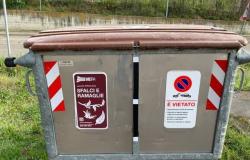Here is the link to follow the FirenzeToday whatsapp channel
Sharp slowdown of the Tuscan economy, after the post-pandemic recovery: in 2023 the increase in the Tuscan product was just 0.6%, lower than the national one (0.9), based on the quarterly indicator of the regional economy (Iter). Industrial turnover fell by 3.5% at constant prices, real exports also fell, income stagnated (-0.1%), and consumption increased very slightly (+1.4%). Despite this, a small consolation, last year’s growth allowed us to complete the recovery of the activity levels lost in the Covid crisis. This is what emerges from the report ‘The economy of Tuscany’ presented today at the Florentine headquarters of the Bank of Italy.
“After the strong post-pandemic recovery”, we read, there was a clear slowdown, conditioned by “the weakness of demand, which was affected by geopolitical uncertainty (which worsened with the crisis in the Middle East), l high inflation and restrictive monetary policies aimed at combating it. The flood events of last November, which affected areas of Tuscany characterized by high hydrogeological fragility, also produced significant economic consequences in the affected territories”.
The birth rate of businesses is decreasing. And their production
The net birth rate of regional businesses decreased further last year, remaining lower than the national average. As regards manufacturing, they recorded a decline in production and sales, concentrated among small and medium-sized companies and in the fashion sector. penalized by the flood last November which hit an area with a high concentration of companies. The largest companies are bearing the brunt, thanks to the presence of multinationals (there are around 6,800 local units in Tuscany). Exports down by 0.6% (the real one, the nominal one rises by 2.8%), even here with worse data for fashion, whose crisis is worsening in the current year.
There is also a slowdown for the construction sector, concentrated in the private residential sector, “in a context of remodulation of tax breaks (i.e. the Superbonus), public works supported by Pnrr funds are better. The tertiary sector is also decreasing, due to the decline in citizens’ purchasing power. Tourism is holding up, but only thanks to the foreign component. Despite this, profitability was favorable for the majority of companies, which benefited from lower energy costs.
The survey conducted by Confindustria Toscana Nord on a sample of manufacturing companies indicates, in the average trend variations, a limited drop in production for the provinces of Lucca (-1.2%) and Pistoia (-0.8) and very marked for that of Prato (-4.8), where the activity of the Tuscan textile sector is concentrated. Based on a similar survey conducted by the Industrial Union, manufacturing production fell by 6.6% in the province of Pisa. In the province of Florence, based on what was found by the Chamber of Commerce, the dynamics was positive on average for the year (2.7%): growth that was still sustained in the first half of the year (8.9) was contrasted with a contraction in the second (-3.5), due to the sharp decline in activity in the leather goods and clothing sector. Overall, the five provinces represent over 70% of the added value of the Tuscan manufacturing industry.
Employment increases, but wages grow less than prices
Positive note on the regional employment front, which increased moderately; an increase that was concentrated in the first part of the year, almost entirely attributable to the services sector, with a prevalence of permanent contracts.
The dynamics of wages, in line with the national average, show an increase significantly lower than that of prices. Over the last decade, it is written in the report “the wages of private sector employees in the region have remained at lower values than those recorded for the country and have been affected by a sectoral recomposition towards sectors with lower wage levels”.
The same goes for family income, which has decreased slightly in real terms, with the erosion of purchasing power due to inflation. Despite the deceleration in prices recorded during the year, consumption has progressively slowed down. In a context of economic slowdown, there has been a deceleration in the indebtedness of Tuscan families, due to the component of loans for the purchase of homes, which has remained stationary, while consumer credit has increased.
Director Barone: “Companies are too small, it is difficult to invest in technologies”
“Productivity in Tuscany is a theme that we essentially also find at a national level – commented the director of the Florentine branch of Bankitalia Vito Barone – Governor Panetta in his final considerations spoke of two problems of the country that create a mortgage on the future. The first is productivity, the other is the demographic crisis. In Tuscany the size of the companies has an impact which prevents the making of investments, especially in technologies, suitable for determining a recovery in productivity in which data languish at a regional level”. And the picture in 2024 should not change. “The first data on GDP show a stabilization of the product, so essentially we should find ourselves with indicators that are on the same line as in 2023”.



